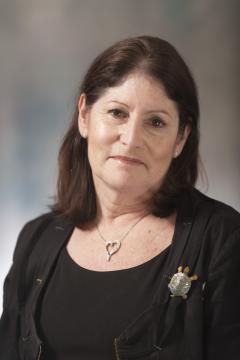
Nan Bernstein Ratner
Hearing and Speech Sciences
University of Maryland
nratner@umd.edu
website

|
Nan Bernstein Ratner Hearing and Speech Sciences University of Maryland nratner@umd.edu website |
| Participants: | 9 |
| Type of Study: | naturalistic |
| Location: | USA |
| Media type: | audio |
| DOI: | doi:10.21415/T5CC7X |
Bernstein, N. (1982). Acoustic study of mothers’ speech to language-learning children: An analysis of vowel articulatory characteristics. Unpublished doctoral dissertation. Bos-ton University.
Bernstein Ratner, N. (1984a). Patterns of vowel modification in motherese. Journal of Child Language, 11, 557–578.
Bernstein Ratner, N. (1984b). Phonological rule usage in mother–child speech. Journal of Phonetics, 12, 245-254.
Bernstein Ratner, N. (1985). Dissociations between vowel durations and formant frequen-cy characteristics. Journal of Speech and Hearing Research, 28, 255–264.
Bernstein Ratner, N. (1986). Durational cues which mark clause boundaries in mother child speech. Journal of Phonetics, 14, 303–309.
Bernstein Ratner, N. (1987). The phonology of parent child speech. In K. Nelson & A. Van Kleeck (Eds.), Children’s Language, 6. Hillsdale, NJ: Lawrence Erlbaum.
Bernstein Ratner, N., & Pye, C. (1984). Higher pitch in baby talk is not universal: Acoustic evidence from Quiche Mayan. Journal of Child Language, 11, 515–522.
In accordance with TalkBank rules, any use of data from this corpus must be accompanied by at least one of the above references.
The children’s language skills were not a primary focus of any of the research carried out to date using these samples. As a result, although phonetic transcriptions of the children have been provided, they are very rough. Given the notorious difficulty of obtaining reli-ability in the transcription of prelinguistic and early child phonetic strings, it is recommend-ed that any researcher interested in doing a phonological analysis of the children’s data request the original audiotapes. The children are transcribed in UNIBET, with minimal fine detail. To create uniformity, and to read as little as possible into the children’s output, most of the children are phonetically transcribed, even when their productions appear to corre-spond to adult forms. The majority of the children’s productions are phonetic, rather than phonemic, given the ages of the children. Some of the older children’s transcripts include regular English orthography.